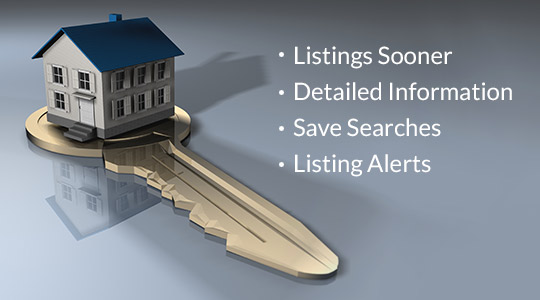Income Properties
An income property is a property bought or developed to earn income through renting, leasing, or price appreciation. An income property can be residential or commercial. Residential income properties are commonly referred to as "non-owner occupied."
It is a property bought or developed with the intention of earning income on it. ... Money is generally made through holding the property and renting it out or selling the property after the value of the property has appreciated.
1. You Make the Decisions
When you decide to invest in an income property, you become your own boss. You choose what property to invest in, what tenant you will rent to, how much you will charge in rent and how you will manage and maintain the property.
In the average 9 to 5 job, you are subject to the wishes of your boss and the company infrastructure in general. While investing in a stock or mutual fund gives you some freedom, in that you are able to choose the stock or mutual fund to invest in, you are still allowing someone else to manage and control your money.
2. Property Appreciation
One of the most unique things about investing in real estate is that you can buy it using a small amount of your own money, while borrowing the rest, often four to twenty times more, from a lender. This is called leverage. If you purchase a property using significantly more debt than equity, the investment is said to be “highly leveraged.”
An Example of the Benefit of Using Leverage:
You invest $10,000 of your own money to buy a property and borrow $90,000 from a bank. By combining your money with the bank loaned money, you are now able to buy a $100,000 asset.
- We will assume that each year, for 10 years, your investment property will appreciate by 5%. Here is where the ability to leverage benefits you. The appreciation is on the entire $100,000 asset, not only the $10,000 of your own money.
- Example:
Year 0: $100,000
*1.05 (appreciation)
Year 1: $105,000
*1.05
Year 2: $110,250
…Year 10: $162,889
So, after 10 years, your property value would have increased by almost $63,000 dollars. Thus, you would have turned your $10,000 investment into over a $60,000 appreciation profit simply by using leverage.
3. Rental Income Is Real Money
If you intend to place tenants in your investment property, you will be able to receive rental income. Any money left after paying your expenses will be money in your pocket.
Suppose you have one tenant whose rent $1,100 a month and your PITI mortgage payment is $700 a month. Thus, subtracting $700 from $1100 will leave you with $400 to go into your pocket each month, right? Not exactly.
From this $1,100, you will want to assume about 5% in monthly maintenance costs and 5% in vacancy costs. Therefore, you will put $110 into a designated bank account each month to deal with maintenance issues and potential vacancy costs. When all is said and done, you will have about $290 each month going directly into your pocket!
Example:
$1,100 (monthly rent)
-$700 (monthly PITI mortgage payment)
=$400
-$110 (for maintenance and vacancy issues
=$290 (your monthly passive income from the rental property)
4. Tenants Will Pay Down Your Mortgage for You
The most popular type of loan is a 30-year fixed rate mortgage. It has an interest rate that will remain the same for the entire 30 year term of the loan. In the beginning of the loan, significantly more money is paid to interest than to principal, but by year 15, it is close to a 50/50 split. Therefore, the longer you hold the property, the more of the loan principal your tenants are paying down and the more wealth you are creating for yourself.
Say you have a $90,000 bank loan with a monthly mortgage payment of $500. In year one, approximately $385 of this payment will go towards paying the interest, while $115 will go towards paying down the principal on the loan.
Example:
$115 (monthly principal payment) * 12 (months) = $1,380 (principal reduction for the year)
$90,000 (original loan)
– $1,380 (principal payments after 1 year)
= $88,620 (loan balance after 1 year)
By year 15, approximately $270 of the monthly mortgage payment will go towards interest, while the remaining $230 towards the principal.
$230 (monthly principal payment) *12 (months) = $2,760 (principal reduction for the year)
Every year that you own this property, you are using the tenant’s money to pay off your debt. By reducing the amount of your loan, you will be building wealth as you will eventually be able to access this money either by refinancing your loan or by selling the property.
5. Numerous Tax Write-Offs
As a rental property owner, you are entitled to huge tax deductions. You can write-off:
- Interest on your mortgage.
- Interest on credit cards used to make purchases for the property
- Insurance
- Maintenance repairs
- Travel expenses.
- Legal and professional fees.
- Property taxes.
- Extensive list at Nolo.com
Depreciation
On top of all of these deductions, the government also allows you to depreciate the purchase price of your property based on a set depreciation schedule, even if your property is actually appreciating in value.
Using our above example, you receive $3,480 in rental income for the year ($290 each month * 12 months). If you made this money at a regular job or in the stock market, you would lose a significant portion of it to pay income taxes. However, by owning a rental property, you can offset the $3,480 income with the depreciation expense for your property, thus being able to reduce or completely eliminate the amount of taxes you have to pay on this rental income.
*Speak to an accountant to determine all of your specific tax write-offs.







